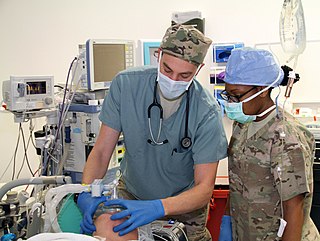Cardiothoracic Anesthesiology Fellowship (U.S.)

All anesthesiologists obtain either a Doctor of Medicine (MD) or Doctor of Osteopathic Medicine (DO) degree prior to entering post-medical school graduate medical education. After satisfactory completion of an Accreditation Council for Graduate Medical Education (ACGME) or American Osteopathic Association (AOA) accredited one year internship in either internal medicine or surgery and a three-year residency program in all subspecialties of anesthesiology, formal advanced training in Cardiothoracic Anesthesiology is available via a one-year fellowship.Cardiothoracic Anesthesia Fellowship - Department of Anesthesiology - Miller School of Medicine at the University of Miami Society of Cardiovascular Anesthesiologists.
The first Cardiothoracic Anesthesiology fellowship was formed at Harvard Medical School and the Massachusetts General Hospital in 1971. Massachusetts General Hospital Department of Anesthesia, Critical Care and Pain Medicine - Fellowships Since then, Cardiothoracic Anesthesiology has become an ACGME approved fellowship (2007), and there are 64 ACGME accredited programs and 212 match positions for the 2017-2018 application year.[ citation needed ]
This fellowship consists of at least eight months of adult Cardiothoracic Anesthesiology, one month dedicated to transesophageal echocardiography, one month in cardiothoracic intensive care unit and two months of elective rotation which includes inpatient or outpatient cardiology or pulmonary medicine, invasive cardiology, medical or surgical critical care and extracorporeal perfusion technology.[ citation needed ]
Fellows are offered the opportunity to participate in clinical research and encouraged to present at national or international conferences after completion of a research project. The arenas of research can be as diverse as neuroprotection, [3] myocardial protection, [4] blood conservation strategies, [5] and port access surgery.
Cardiac surgical training
Fellows are trained to provide perioperative anesthetic management for patients with severe cardiopulmonary pathology. Some of the cardiac surgeries they train for include the following: coronary artery bypass surgery (CABG) both on cardiopulmonary bypass as well as on a beating heart, heart valve surgery, aortic reconstruction requiring deep hypothermic arrest, mechanical ventricular assist device (VAD) placement, thoracic aortic aneurysm repair, aortic dissection repair, heart transplants, lung transplants, heart/lung transplants, and adult congenital heart surgery.[ citation needed ]
Adequate exposure and experience provided in the management of adult patients for cardiac pacemaker and automatic implantable cardiac defibrillator placement, surgical treatment of cardiac arrhythmias, and the complete gamut of invasive cardiologic (catheter-based) and electrophysiological procedures is expected as well.
Fellows also gain experience in perioperative medical (anesthetic) management of the cardiac patient, including management of intra-aortic balloon pumps (IABP) and ventricular assist devices (VAD), post-operative ICU care, blood transfusion medicine, electrophysiology, and transthoracic echocardiography. Massachusetts General Hospital Department of Anesthesia, Critical Care and Pain Medicine - Fellowships
Many fellowships also offer opportunity to become familiar with anesthetic techniques for pediatric cardiac surgery and minimally invasive cardiac surgery, however no formal case numbers for ACGME accreditation are required. [6]
Thoracic surgical training
In addition to the focused cardiac training, additional clinical experience within the full one-year fellowship includes anesthetic management of adult patients undergoing thoracic and vascular surgery. Fellows are trained to manage all type of thoracic surgeries which include video-assisted thoracoscopic surgery (VATS), [7] open thoracotomy, and advanced airway procedures involving the trachea. Fellows achieve expertise in different techniques of lung isolation and ventilation including double-lumen endotracheal tubes, bronchial blockers, Univent tubes under guidance of fiber optic bronchoscopy, and advanced jet ventilation. [8]
Advanced monitoring and invasive techniques
The complex nature of cardiothoracic surgery necessitates extra training to acquire the skills needed to be a cardiothoracic anesthesiology consultant. Fellows are trained to achieve expertise in the advanced monitoring techniques including invasive blood pressure, arterial blood gas analysis, cardiac output monitoring, jugular venous oxygen saturation, cerebral oximetry, Bispectral Index (BIS), [9] Transcranial doppler (TCD), [10] and Near infrared spectroscopy (NIRS). [11]
Finally, invasive procedures completed by the cardiothoracic anesthesiology fellows include but are not limited to arterial line placement (femoral, axillary, brachial, radial), central venous cannulation (internal jugular, femoral, subclavian), pulmonary artery catheter placement, transvenous pacemaker placement, thoracic epidural analgesia, fiberoptic endotracheal tube placement, 2D/3D transesophageal echocardiography, intraspinal drainage placement, and advanced ultrasound guidance of vascular access.[ citation needed ]








